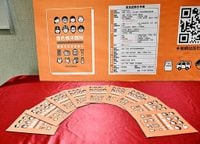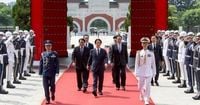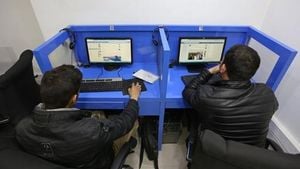On September 16, 2025, Taiwan unveiled a newly updated civil defense handbook, a move that underscores the island’s determination to bolster public readiness amid escalating tensions with China. The launch, led by the All-out Defense Mobilization Agency, comes as Taiwan faces a growing drumbeat of military maneuvers from its powerful neighbor across the strait. But officials insist: this is not about sowing panic—it’s about preparation, resilience, and hope for peace.
The 36-page handbook is more than just a pamphlet; it’s a carefully crafted guide designed to help ordinary citizens navigate crises ranging from natural disasters—like the earthquakes that regularly rattle the island—to the unthinkable prospect of a military invasion. The handbook’s release, the third since its original debut in 2022, reflects both lessons learned from recent global conflicts and a sobering assessment of Taiwan’s unique vulnerabilities.
“Since the outbreak of the Russia-Ukraine war, we have felt that much more information needs to be added,” Shen Wei-chih, director of the All-out Defense Mobilization Agency, told reporters at the launch event, according to the Associated Press. “Today’s new edition of the National Defense Handbook is about how to enhance and raise public awareness of crises, as well as strengthen the ability for self-defense.”
Recent months have seen a surge in Chinese military activity near Taiwan. According to Taiwan’s Ministry of National Defense, between September 15 and 16 alone, China’s People’s Liberation Army (PLA) dispatched 24 fighter jets, drones, and support aircraft toward the island, along with 11 navy vessels and six other Chinese ships. These maneuvers are part of a broader campaign of intimidation, which has included large-scale exercises simulating a blockade and, most recently, a Chinese military music video featuring missiles, amphibious assaults, and the Taipei 101 skyscraper. The video’s refrain—“We are the vanguard for reunification”—leaves little doubt about Beijing’s intentions.
For Taiwan’s government, led by President Lai Ching-te and the Democratic Progressive Party, the response has been to double down on public engagement and civilian preparedness. The new handbook, issued under the auspices of the All-out Defense Mobilization Agency, is the product of months of consultation and international benchmarking. “We drew on the approaches of France and Norway, and after multiple rounds of discussion and consultation with experts, we completed this handbook. It is expressed through simple text and images, making it easy for people of all ages to understand,” explained Col. Chiao Fu-chun, a spokesperson for the Defense Ministry, as reported by the Associated Press.
The handbook’s content is practical and accessible. It features checklists for emergency evacuation bags, recommendations for storing a week’s worth of essentials—canned food, toilet paper, pet food, and more—and guidance on recognizing air raid and tsunami sirens. There are instructions on how to keep lines of communication open if the internet goes down, including the use of radios and landlines, and advice on seeking reliable information from police stations or local government offices. For the tech-savvy, the online version of the handbook links to apps showing emergency shelter locations and instructional videos for various scenarios.
One new section addresses the risk of disinformation—a lesson drawn from the information warfare seen in Ukraine. The handbook warns, “adversaries may also disguise themselves as friendly forces,” and illustrates this with a cartoon of a soldier bearing a Chinese flag. It urges citizens to be vigilant, seek verified information, and avoid falling prey to rumors or enemy propaganda.
Shen Wei-chih emphasized that the handbook’s publication during peacetime is deliberate. “Why are we releasing this handbook during a time of peace? It is not to create panic, but to tell people you need to make preparations while there is peace, so when crisis happens you won’t know what to do,” he said during the press conference, as quoted by Reuters. “The earlier you are prepared, the earlier you study (the booklet), the earlier you will be safe.” The government is printing 5,000 hard copies for initial distribution, with more to follow, and making the handbook available online in both Chinese and English.
Citizens are encouraged to keep a copy of the handbook in their emergency grab bags—those go-bags packed with necessities and stored in an easily accessible location. The message is clear: readiness is everyone’s responsibility, not just the military’s. This approach reflects a broader shift in Taiwanese society, where civil defense is increasingly viewed as a shared civic duty.
Civil society organizations have been quick to step up. Kuma Academy, founded by Puma Shen, has begun offering civil defense courses to the public, drawing on a generous NT$1 billion (US$32 million) donation from businessman Robert Tsao. According to the Associated Press, these efforts are part of a growing movement to empower ordinary people to play an active role in the island’s defense. It’s not just about stockpiling supplies—it’s about cultivating a mindset of resilience and mutual support.
Of course, the handbook does not shy away from the stark realities of the region’s geopolitics. The military action section warns of threats such as “non-friendly actors conducting live-fire drills near Taiwan or unilaterally declaring a no-fly zone under the guise of military exercises.” These scenarios are no longer hypothetical; they reflect the daily challenges faced by Taiwan’s government and people.
Underlying all these preparations is a fierce debate over Taiwan’s future. Beijing has repeatedly rebuffed offers of dialogue from President Lai, labeling him a “separatist,” and insists that Taiwan is an inalienable part of China. Taiwan, for its part, rejects these claims unequivocally, maintaining that only its people have the right to determine their own destiny. “Taiwan’s government strongly rejects China’s territorial claims, emphasizing that only its people can determine their future,” as noted by Reuters and echoed in statements from top officials.
Yet, despite the saber-rattling and the steady stream of headlines about military posturing, Taiwan’s leaders are adamant that the purpose of the handbook is not to frighten. “It is about how to enhance and raise public awareness of crises, as well as strengthen the ability for self-defense,” Shen Wei-chih reiterated. The emphasis is on calm, proactive preparation—a message that resonates across party lines and social divides.
As the region remains on edge, Taiwan’s new civil defense handbook stands as a testament to the island’s resolve. It’s a practical tool, a symbol of unity, and a quiet assertion of agency in an uncertain world. Whether or not it is ever put to the ultimate test, it has already succeeded in sparking a vital conversation—one that every Taiwanese household now has a stake in.






